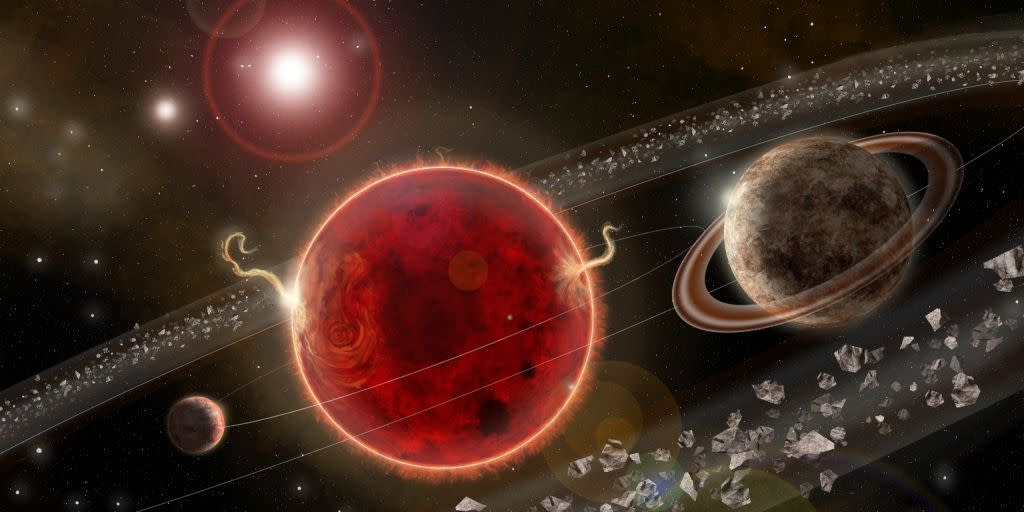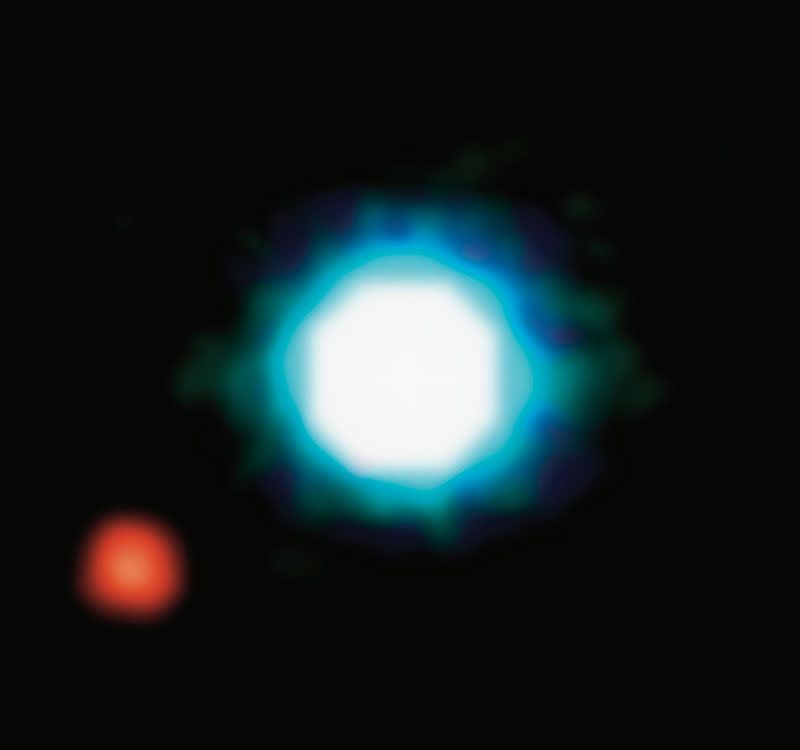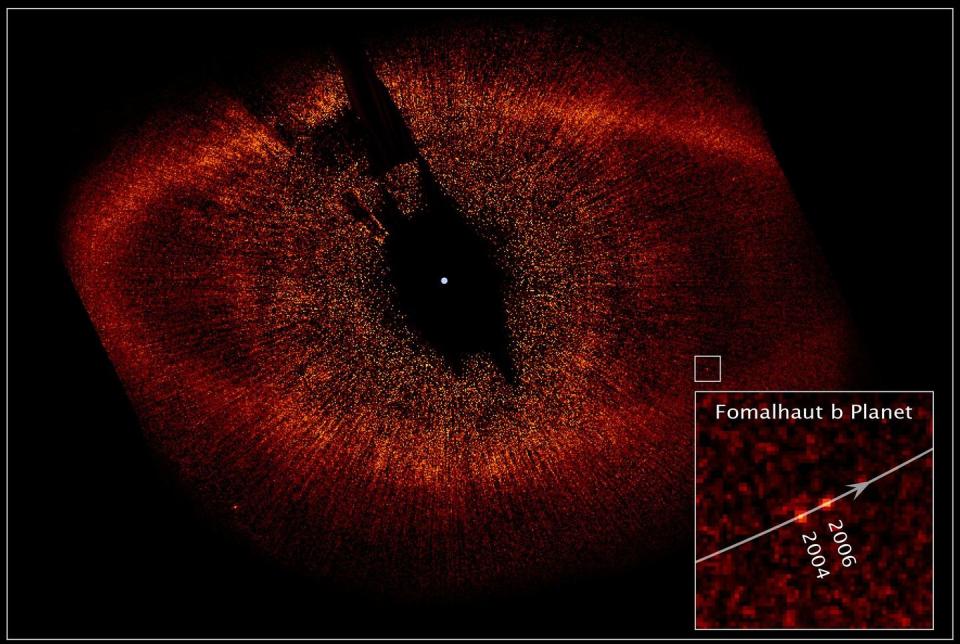Astronomers Think They Have the First Image of This Important Exoplanet

Astronomers claim to have snapped an image of Proxima c, an exoplanet circling our nearest stellar neighbor, Proxima Centauri.
2M1207 b, which orbits the star 2M1207, was the first exoplanet that astronomers directly imaged.
In other exoplanet news, astronomers recently discovered that an early image of an exoplanet circling the star Fomalhaut isn't what it seems.
Astronomers believe they've captured the first ever image of Proxima c, an exoplanet orbiting our nearest star, Proxima Centauri.
Astronomers and enthusiasts have long marveled at Proxima Centauri not only because of its relatively short distance from our own solar system (4.2 light-years, to be exact), but because it also has a planet orbiting in the habitable zone.
Proxima b made waves when astronomers first discovered it in 2016. Since it lies in the habitable zone, it could potentially host liquid water, and, in turn, life.
The astronomers reassessed data collected by the SPHERE instrument on the European Southern Observatory's (ESO) Very Large Telescope in Chile and pinpointed 19 potential observations of Proxima c. The journal Astronomers and Astrophysics published the scientists' findings, which first appeared on arXiv.org, Scientific American reports.
Proxima c, likely a miniature copycat planet of our Neptune, is roughly seven times the mass of Earth. The planet is also reportedly very bright, which could mean it hosts a ring system larger than Saturn's—some astronomers are skeptical—or that it's surrounded by a cloud of dust.
There's a lot of information astronomers could glean from these observations. It could help them better understand Proxima b—Proxima Centauri's planetary golden child. Like the planets in our solar system, the exoplanets around Proxima Centauri are expected to orbit the star along the same plane. The more information we can collect about Proxima c, the better we'll get to know Proxima b.
(Sadly, Proxima b isn't as photogenic because its orbit is very close to the star. Proxima c, however, is farther away.)
The First Directly Imaged Exoplanet

In 2004, the ESO snapped a picture of the Jupiter-like exoplanet 2M1207 b as it spun around its star, 2M1207. It was the first time astronomers had directly imaged an exoplanet, according to NASA. 2M1207 is a brown dwarf star, and it can be found about 230 light-years away in the constellation Hydra. (This was also the first time astronomers spotted an exoplanet orbiting a brown dwarf.)
Since then, we've been able to capture direct images of hundreds of strange exoplanets orbiting stars in distant solar systems.
A Cosmic Demotion

Snapping pictures of these faraway worlds isn't easy. Take the case of Fomalhaut b, an exoplanet orbiting the star Fomalhaut, found in a patch of sky 25 light-years away. The Hubble Telescope first spotted Fomalhaut b in 2004. It appeared to be roughly the mass of three Jupiters, according to the New York Times, with an orbit saddled up next to a massive debris field.
But when astronomers revisited the star in 2014, they weren't able to find the tiny planet—it had evidently disappeared. A reassessment of the initial Hubble observations in 2004 and 2006 left an important clue: the planet seemed to expand and contract.
Now, thanks to series of recent computer simulations, astronomers believe the object they first spotted in the early aughts was like a cloud of debris left in the wake of a massive asteroid collision. Researchers from the University of Arizona published their findings this week in the Proceedings of the National Academy of Sciences.
But it will take more observations to be sure. Luckily, we have a wide array of high-powered instruments coming online in the next few years to help us out.
You Might Also Like


